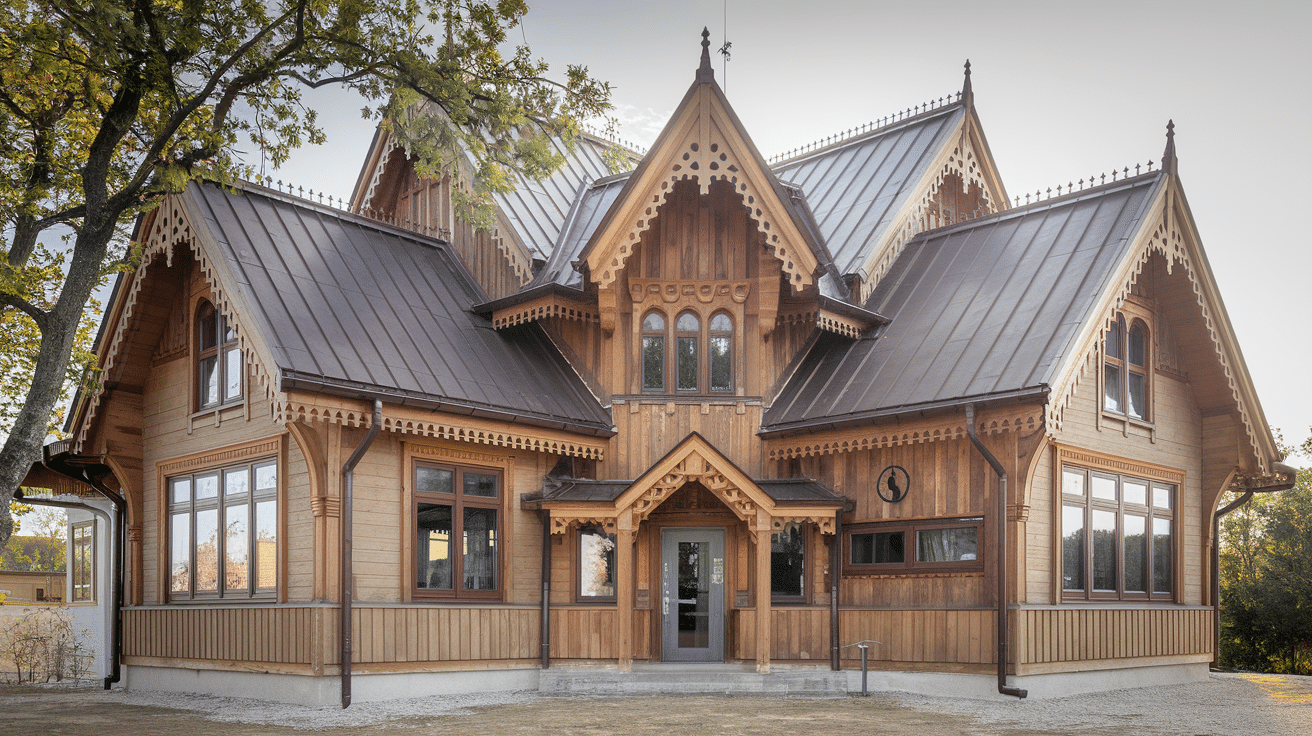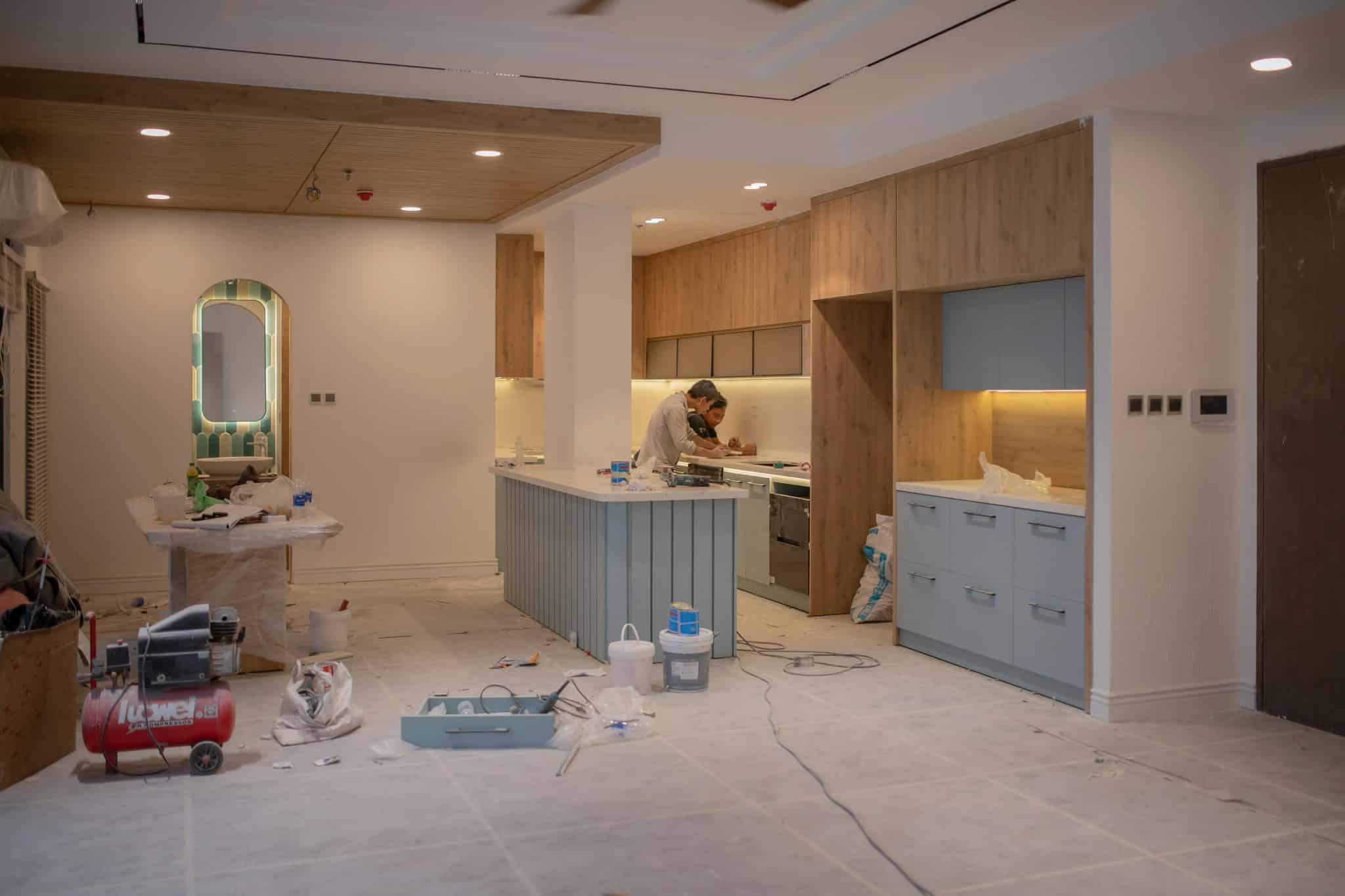Ever noticed those whimsical wooden buildings with pointed roofs and intricate trim? These Carpenter Gothic gems tell a uniquely American story.
Born from America’s timber abundance and local craftsmanship, this style transformed European Gothic elements into wooden masterpieces. Ordinary builders became artists, creating architectural poetry through steep gables, decorative vergeboards, and ornate details.
Join me as we explore how 19th-century carpenters turned simple structures into enduring treasures that still capture our imagination today. Discover the stories behind these overlooked architectural jewels and why they deserve our appreciation and preservation.
Historical Origins of Carpenter Gothic
| Time Period | Key Developments | Notable Influences | Regional Variations |
|---|---|---|---|
| 1830s-1840s | Origins and early development | European Gothic Revival movement: Pattern books appear | Limited to Northeast initially |
| 1842 | Publication of Andrew Jackson Downing’s “Cottage Residences” | Downing’s collaboration with Alexander Jackson Davis | Designs begin spreading through pattern books |
| 1850s-1860s | Peak popularity during westward expansion | Industrial Revolution: mass-produced scroll saws and wood trim | New England (restrained); Hudson Valley (ornate); Rural South (vernacular adaptations) |
| 1860s-1870s | Church designs flourish | Religious revival movements; desire for visually striking yet affordable structures | Rural churches have become iconic examples nationwide |
| 1870s-1880s | Victorian elaboration | Increased ornamentation; incorporation with other Victorian styles | California (Gold Rush influence); Midwest (simplified farm versions) |
| 1890s-1910s | Gradual decline | Competing architectural styles, changing tastes | Persistence in rural areas; simplified versions continue |
| 1930s-1950s | Recognition of historical significance | Early preservation movements begin | Regional revival interest |
| 1960s-Present | Preservation and appreciation | National Register of Historic Places listings; architectural studies | Contemporary appreciation of vernacular American architecture |
Note: Carpenter Gothic’s democratic nature meant it was adapted by local builders rather than academic architects, resulting in significant regional variation and interpretation throughout its history.
Carpenter Gothic Architecture: Key Features
1. Distinctive Elements
Carpenter Gothic architecture is immediately recognizable by its pointed arches that elegantly frame windows and doorways, creating a sense of vertical emphasis.
These structures feature steeply pitched roofs with dramatic gables that not only provide visual interest but also shed rain and snow efficiently.
Throughout these wooden buildings, delicate tracery creates intricate patterns that capture light and shadow, showcasing the remarkable skill of American craftsmen who translated traditional stone Gothic elements into the more flexible medium of wood.
2. American Adaptation
Unlike their European stone counterparts, Carpenter Gothic buildings distinctively use wood as their primary material, reflecting a practical response to America’s abundant timber resources.
This material choice allowed local craftsmen to adapt complex Gothic designs without requiring specialized stonemasons.
The result was a uniquely American architectural style that maintained the essence of Gothic principles while embracing the natural properties of wood, creating structures that were both beautiful and well-suited to the resources and skills available in 19th-century America.
3. Signature Decorative Features
What truly distinguishes Carpenter Gothic architecture is its elaborate ornamental woodwork that transforms simple buildings into artistic statements.
Decorative finials elegantly crown roof peaks, while slender spires reach skyward, creating a dramatic silhouette against the sky.
Perhaps most characteristic is the intricate “gingerbread” trim adorning eaves and porches—those delicate, lacy patterns that give these structures their distinctive charm.
These ornate details were made possible by scroll-saw technology, which allowed carpenters to create complex decorative elements with unprecedented precision, showcasing the remarkable artistry of American craftsmen who elevated humble lumber into architectural poetry through their skill and creative vision.
Carpenter Gothic in Religious Buildings
Affordable Spirituality
- Rural Appeal: Small communities created striking houses of worship on modest budgets
- Widespread Adoption: Wooden churches with soaring steeples became iconic across America
- Local Materials: Used readily available timber rather than expensive imported stone
Notable Examples
- St. Mark’s Episcopal (Palatka, Florida): Classic example of the style’s charm
- St. Luke’s Episcopal (Cahaba, Alabama): Showcases the spiritual appeal of wooden Gothic
- Community Focus: Intimate proportions fostered closer congregational worship
Symbolic Design Elements
- Vertical Emphasis: Steeples and pointed arches direct attention heavenward
- Dramatic Interiors: Steep, pitched roofs create inspiring worship spaces
- Light Play: Wooden tracery and stained glass filter light to create ethereal atmospheres
- Spiritual Impact: Even simple structures evoked divine presence through architectural elements
Carpenter Gothic in Residential and Civic Architecture
Carpenter Gothic quickly expanded beyond churches to homes and civic buildings across America. Pattern books democratized these Gothic-inspired designs, making them accessible to ordinary homeowners attracted to their picturesque charm and traditional values.
Small towns from New York’s Hudson Valley to California Gold Rush communities embraced the style, where distinctive pointed arches and decorative trim became symbols of local prosperity.
Notable surviving examples include Martha’s Vineyard’s Oak Bluffs cottages, the house in Grant Wood’s “American Gothic” painting, and Savannah’s Gingerbread House.
These homes, with their steep gables, decorative bargeboards, and ornate windows, brought high-style architecture within reach of everyday Americans.
| Feature | Churches | Homes | Civic Buildings |
|---|---|---|---|
| Scale | Tallest in community | Modest family-sized | Medium institutional |
| Key Elements | Steeples, bell towers | Steep gables, decorative trim | Modest towers, formal entrances |
| Ornamentation | Religious symbols, elaborate tracery | “Gingerbread” trim, decorative bargeboards | Restrained decoration, dignified details |
| Windows | Pointed arches, stained glass | Gothic-inspired frames, colored accents | Larger windows, Gothic forms |
| Famous Examples | St. Mark’s (FL), St. Luke’s (AL) | “American Gothic” house, Oak Bluffs cottages | Small-town halls, Lyndhurst (NY) |
| Significance | Spiritual focus, community landmark | Middle-class prosperity, picturesque living | Civic pride, community accomplishment |
Challenges in Preserving Carpenter Gothic Architecture
1. Preservation Challenges
- Wooden structures vulnerable to weather damage, insects, and material aging
- Intricate decorative details particularly susceptible to deterioration
- Constant maintenance required to prevent structural compromise
- Limited availability of historically accurate replacement materials
2. Preservation Efforts
- Community groups, historians, and property owners leading restoration initiatives
- Funding limitations pose significant challenges to preservation work
- Difficulty finding craftspeople skilled in traditional building methods
- Modern building codes sometimes conflict with historical restoration standards
3. Historical Significance
- Represent important chapter in American architectural development
- Showcase regional adaptation and local craftsmanship traditions
- Connect current generations with 19th-century cultural values
- Serve as tangible links to community development history
Modern Influence of Carpenter Gothic
Carpenter Gothic architecture continues to inspire modern designers who incorporate its distinctive elements—decorative trim, pointed arches, and steep rooflines—into today’s structures, blending traditional charm with contemporary materials.
Architects now reinterpret this 19th-century style by combining its ornamental details with clean lines and sustainable features, preserving its playful spirit while meeting current building standards.
The style’s enduring appeal stems from its nostalgic character and connection to American rural heritage, offering a warm counterpoint to minimalist trends and providing homeowners with a sense of individuality and historical continuity.
Conclusion
Carpenter Gothic represents American ingenuity at its finest. Local builders adapted European Gothic elements into wooden masterpieces with steep gables, pointed arches, and intricate woodwork.
This style flourished across rural America in churches, homes, and civic buildings, reflecting community values and identity.
Craftsmen used abundant timber to create affordable yet beautiful structures that balanced tradition with innovation.
Despite preservation challenges, these treasures deserve protection. Their delicate details tell important stories about American craftsmanship and cultural development. Each surviving building stands as a testament to our architectural heritage and the creative spirit of 19th-century builders.















One Comment
pin up вход: pin up вход – пин ап вход